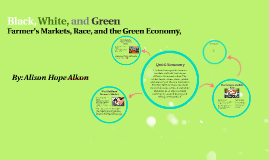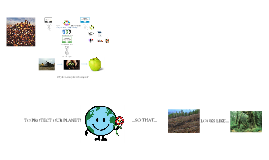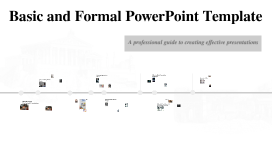Basic and Formal PowerPoint Template
Transcript: Basic and Formal PowerPoint Template A professional guide to creating effective presentations Recap of Presentation Essentials Elements of a Formal Template Effective Data Presentation Techniques Choosing Appropriate Colors Effective presentations rely on clear content, formal design, and engaging visuals. Consistent layout and concise messaging are key to success. A formal template includes consistent use of color schemes, proper alignment, sophisticated fonts, and professional graphics to maintain a professional appearance. Conclusion and Key Takeaways Graphs and Charts in Presentations Characteristics of Formal Design Understanding Formal Design Graphs and charts play a crucial role in presenting complex data in a visually engaging manner. Discover how to effectively use data visualization techniques to convey information clearly and concisely. Selecting the right color scheme is crucial for creating a visually appealing presentation that aligns with the formal design principles. Formal design focuses on clean lines, minimalistic elements, and a structured layout to create a professional and polished look. Graphs and charts are powerful tools for visually representing data trends, comparisons, and relationships. They help in making complex information easily understandable and impactful for the audience. Recap and final tips for creating professional presentations Effective Data Visualization Techniques Color Harmony and Contrast Significance of Colors in Design Final Tips for Professional Presentations Formal design in presentations emphasizes professionalism and clarity to convey information effectively. Data visualization techniques like interactive graphs, infographics, and heat maps enhance audience comprehension and retention. These techniques transform complex data sets into compelling visual stories, aiding in better decision-making and analysis. Harmonious color combinations create a sense of unity, while contrasting colors highlight important information. Understanding color theory is essential for effective design. Ensure a cohesive color scheme, legible typography, and impactful data visualization. Use animations sparingly for emphasis and transitions to maintain flow. Colors evoke emotions and convey messages. In formal presentations, colors should be chosen strategically to enhance readability and professionalism. Consistency in Design Smooth Transition Flow Selecting High-Quality Images Slide Layout Best Practices Using consistent fonts, colors, and alignment across slides improves visual flow and helps audience focus on the content. Use seamless transitions between slides to maintain a cohesive narrative and enhance the overall flow of the presentation. Introduction to Professional Presentations Importance of Visuals Subtle Animation Techniques Enhancing Presentations with Animation and Transitions Choosing the right images can significantly enhance the visual appeal and effectiveness of your presentation. Quality matters more than quantity when it comes to imagery. Effective slide layout is crucial for maintaining audience engagement and clarity of information. Consistency and simplicity are key elements in creating visually appealing slides. High-quality images capture attention and communicate ideas effectively. They elevate the overall professionalism and engagement of your presentation. Subtle animations like fade-ins and motion paths can draw attention to key points without distracting the audience. Importance of Professional Presentations Understanding the impact of professional presentations in conveying credibility and engaging audiences effectively. Selection Criteria Whitespace and Balance Professional presentations play a crucial role in making a lasting impression, enhancing communication, and influencing audience perceptions. Incorporate subtle effects and smooth transitions to captivate your audience Consider relevance, resolution, and aesthetics when choosing images. Ensure they align with your message and enhance audience understanding without distractions. Strategic use of whitespace and balanced placement of elements enhance visual appeal and prevent overcrowding on slides, ensuring clarity.

















